Strong comprehensive service capability: Amazon TOP10 brands supplier, perfect quality control system.Fast proofing: 2 days for regular proofing, 6 days for custom proofing

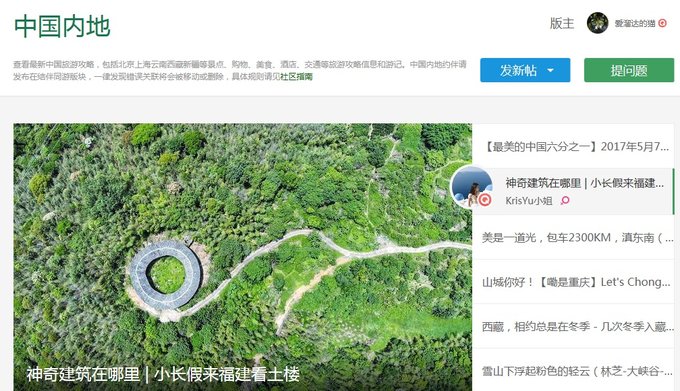
▼ Hengjia Tulou-Find the lost geometry in the deep jungle
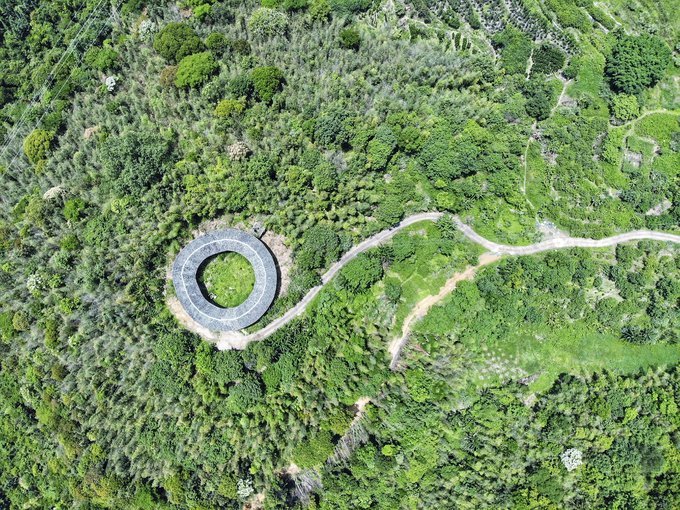
▼ Shengqing Building-In addition to the circular earth building, there is also a special structure of this kind of building package。
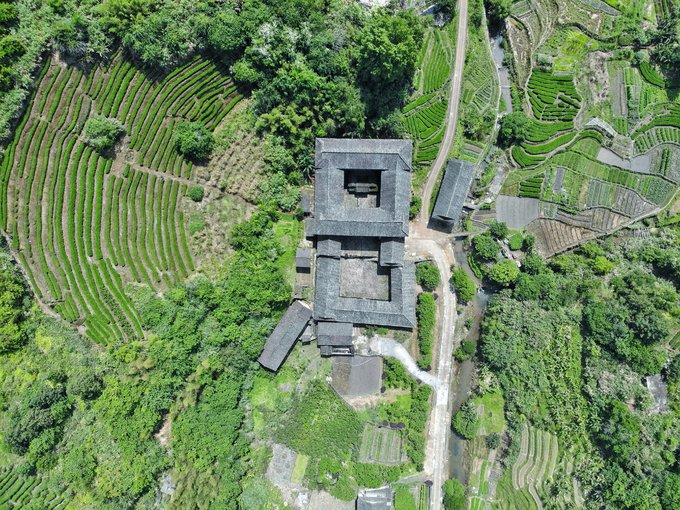
▼ Zhencheng Building-Tulou with "ears"
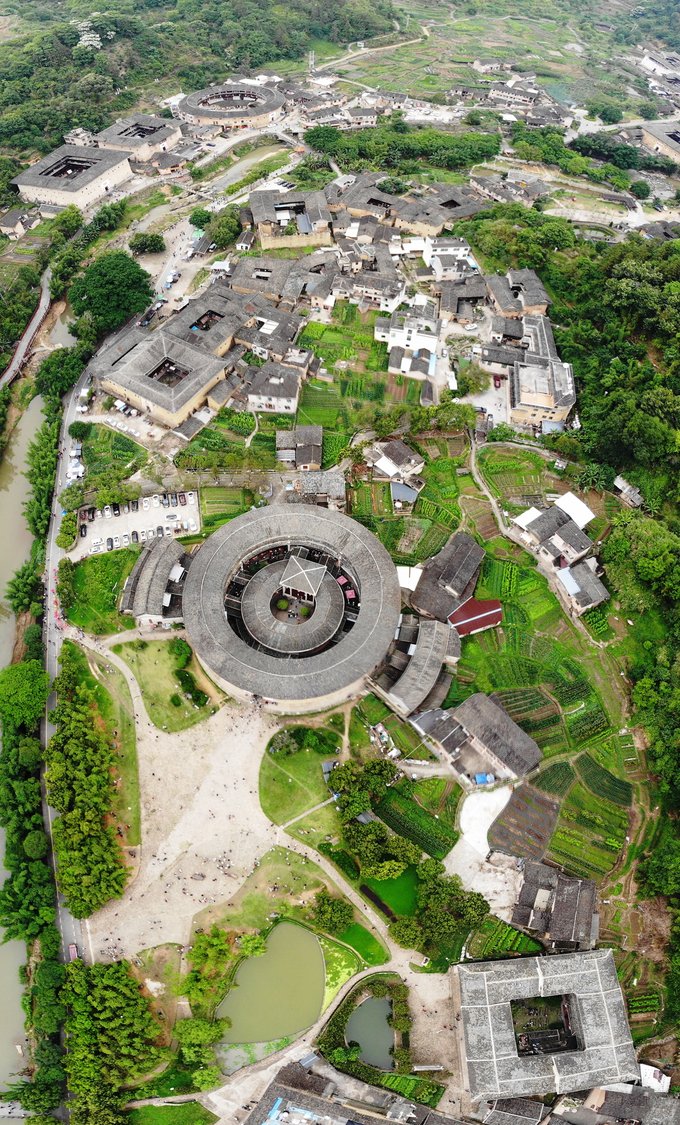
▼ 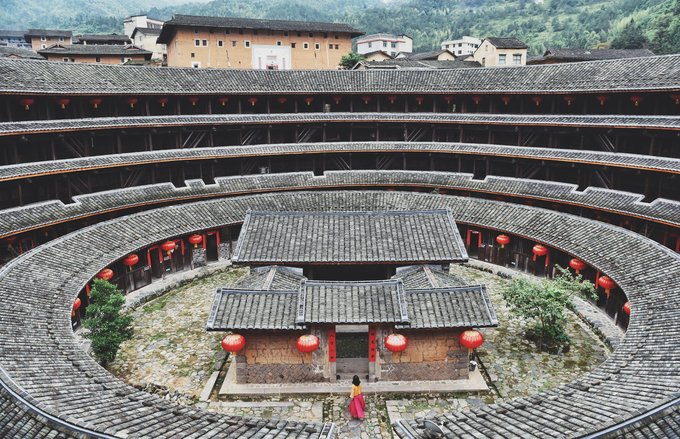
▼ Chengqi Building-4 floors high, 4 circles in the building, 400 rooms up and down; circle in the circle, snare ring, after three hundred years of vicissitudes "
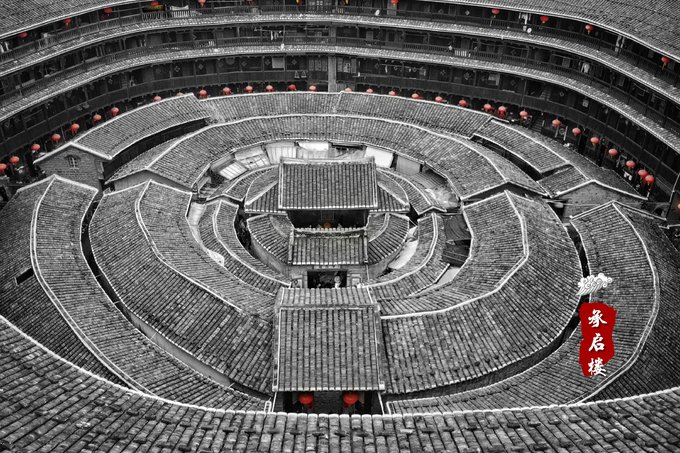
▼ Cloud Water Ballad-Green hills and green water, ancient trees。
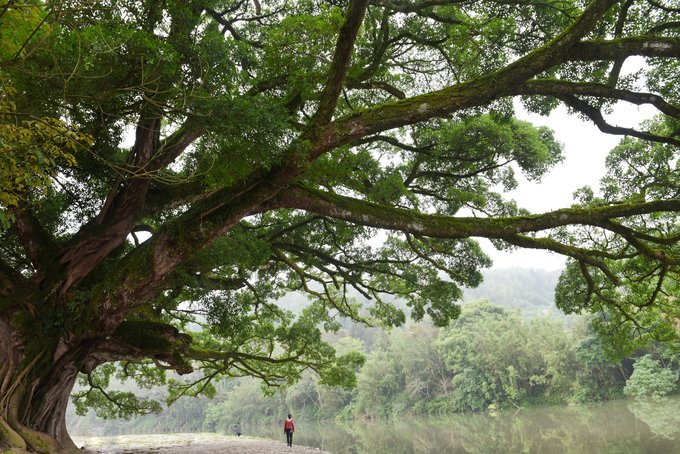
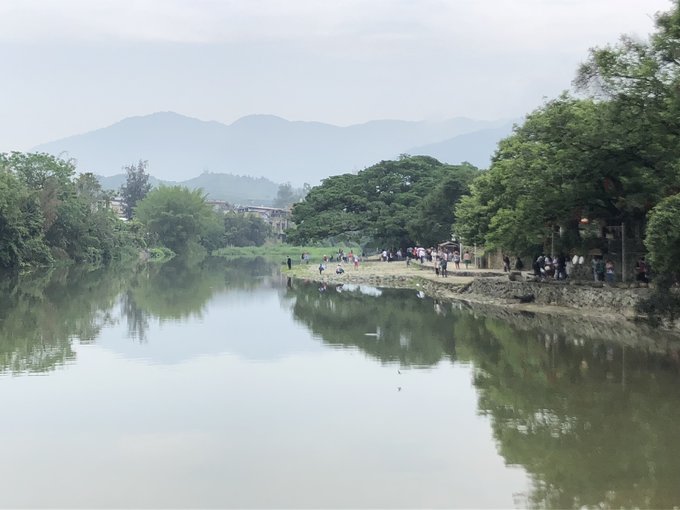
♦ Tulou Overview:
♦♦ Origin:
It is often said that the Hakka Tulou is inseparable from the Hakka. The Hakka people were originally from the Central Plains. From Wuhuranhua to the Southern Song Dynasty, several large-scale population migrations occurred due to war and climate change. The Han people who went south formed a number of branches, and one of them settled in the southwestern area of Fujian, and claimed to be a "Hakka". At the same time, they also brought the Central Plains culture, Confucianism and life habits here.
Most of southwestern Fujian is mountainous, and the terrain is steep, with bandits and beasts infested. In order to survive better, the Hakkas gathered together and built a fortress-like earthen building to protect them from foreign invasions.
Tulou is made of raw soil as the main building material, supplemented by bamboo, cobblestone and other building materials, mixed with fine sand, lime, glutinous rice, brown sugar, bamboo chips, wooden strips, etc., and is built by repeated kneading, clad and pressing. The roof of the building is covered with fire tile cover, which is durable. It has the characteristics of sturdiness, strong defensiveness, and great beauty.
I used to think that only Hakka people built earth buildings. During this trip, I learned that local people in Fujian also built many earth buildings under the influence of Hakka people. There is almost no difference in appearance between Fujian Tulou and Hakka Tulou, but the internal structure is still different. Hakka Tulou are all internal corridors, while Fujian Tulou are mostly unitary Tulou
♦♦ Distribution:
The earth buildings are mainly distributed in the southwestern area of Fujian. Among them, the number of earth buildings in Yongding and Nanjing is complete, with many varieties and concentrated distribution. In addition, there are Huaan Tulou, Longyan Tulou and so on.
Yongding Tulou Group mainly includes: Hongkeng Tulou Group, Chuxi Tulou Group, Gaobei Tulou Group, Fudi
The Nanjing Tulou group mainly includes: Tianluokeng (four dishes and one soup), Huaiyuan Tower, and Hegui Tower (inside the Yunshuiyao), Hekeng Tulou Group, Taxia Village, Yuchang Tower (East to West), Shiqiao Tulou
Huaan Tulou Group mainly includes: Dadi Tulou Group (Eryi Building), Qi Yunlou (mother of Tulou)
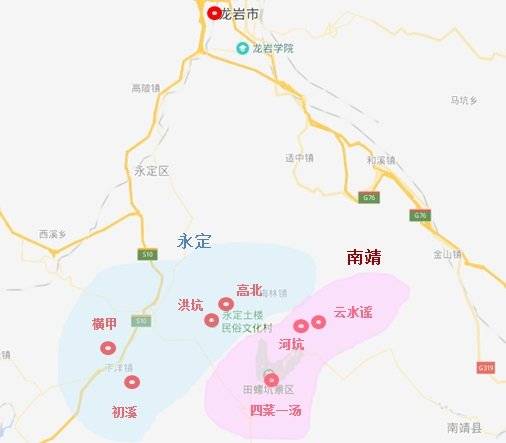
So how to choose the final destination in the complex complex of earth buildings? Hope this post of mine can provide you with some useful information
♦ Transportation:
The most convenient railway station from Shanghai to Yongding and Nanjing is Longyan Station. Longyan also has an airport, but because it is a military-civilian airport, there are very few flights.
We set off from Shanghai this time and chose the high-speed rail + self-driving mode. Reasonably avoid high-speed congestion out of Shanghai. It takes about five and a half hours to take the high-speed train from Shanghai to Longyan. It's a pity that I didn't pass the car overnight, otherwise it would save some time.
You can rent a car directly at Longyan Railway Station. If you do n’t drive by yourself, it is still very convenient to go to the buses of several major earth buildings.
The driving distance / time is as follows:
Longyan-Chuxi 90KM / 1.5 hours
Longyan-Hongkeng 80 KM / 1.5 hours
Chuxi-Hongkeng 30KM / 40 minutes
Hongkeng-Gaobei 5KM / 8min
Hongkeng-Hekeng 13KM / 17 minutes
Hekeng-Yunshuiyao 15KM / 20 minutes
Hekeng-Tianluokeng 20KM / 40 minutes
Except for Tianluokeng, we didn't go. Others are very open country roads and provincial roads. There is no legendary very steep mountain road section. There are also very few vehicles along the way, and the self-driving experience is very good.
♦ Itinerary arrangement and experience sharing
A total of 4 days and 3 nights, 3 days of actual play time, 2 and a half days of Fujian Tulou, and half a day of Xiamen Jimei
Day1 Shanghai-Longyan-Chuxi-Hongkeng
In the morning, the high-speed railway from Haiyan to Longyan (because it is difficult to grab tickets, I bought a ticket from Shanghai to Xiamen North for the round trip. On the return trip, I took a 50-minute train from Longyan to Xiamen North). Chuxi Tulou 1.5 hours. Chuxi Tulou play for 2-3 hours. In the evening, go to Hongkeng Scenic Area and Suhongkeng Scenic Area.
Day 2 Hongkeng Tulou Group-Gaobei Tulou Group-Yunshuiyao
Early in the morning when the tourist group has not yet arrived to visit Hongkeng, go to Gaobei at noon, to Yunshuiyao in the afternoon, and Suyunshuiyao
Day 3 Yunshuiyao-Hekeng Tulou-Hengjia Tulou
In the early morning, visit Yunshuiyao, then go to Hekeng Tulou, and finally go to Yokoka to find Yokoka Tulou
In addition to the accommodation for the first two days, my schedule for this trip is randomly arranged, so for everyone to arrange the schedule more reasonably, share some experience:
1. Hongkeng, Gaobei, and Yunshuiyao on Day 2 are all popular attractions. If you are going on a small holiday, it is recommended to visit in the morning and evening.
2. At present, you can visit Hekeng Earth Pit for free with Yunshuiyao tickets, so if you go to both places, it is recommended to go to Yunshuiyao first
3. Day3 originally wanted to go to Taxia Village, but Taxia Village, Tianluokeng, and Yuchang Building are now packaged, so it is not cost-effective to go alone. You can consider three to visit together.
4. Day3's Hengjiatu Building is near Chuxi Tulou, and should be arranged together with Chuxi on DAY1. But this earth building is only suitable for aerial photography.
In addition, the flow of people on the small holiday has been annoying, so it is not recommended to visit Hongkeng, Gaokeng, Yunshuiyao and other famous attractions during the National Day Spring Festival.
♦ Accommodation
If you want to go to Yunshuiyao and Hongkeng, these famous scenic spots, it is highly recommended to live in or at the entrance of the scenic spot, so that you can avoid people in the morning and night.
Hongkeng-Yongding Tulou Mengtian Hotel: The hotel is in the scenic area, if you want to stay, you must buy tickets for the scenic area. The diagonally opposite side of Zhencheng Building. The location is very good, the rooms and bathrooms are very neat and clean. The price is cheap and the price is high. The boss is a young man, and NICE is very helpful
Yunshuiyao-Yunshuiyao Tulou Club: The hotel is in the scenic area, and you need to purchase a ticket to stay. The courtyard is beautiful, and the rooms and bathrooms are clean. The price is slightly expensive, the price is not high.
Because I had set my accommodation in the scenic area from the beginning, I had to visit these two popular spots. The specific visit experience will be introduced later
Tulou group evaluation articles
There are thousands of earth buildings in Fujian, even Yongding. There are tens of thousands of earth buildings in two areas of Nanjing. There are many large earth buildings alone. I think most non-professionals will not look at all earth buildings. In the eyes of our laymen, there is not much difference between this earth building and that earth building.
So how to choose which earthen buildings to visit? The following will evaluate the various soil buildings I visited this time in terms of visibility, popularity, characteristics, transportation and other dimensions, which are purely personal hobbies for reference.
The following is arranged in the order of this visit
♦ Chuxi Tulou Group
Chuxi Village is where the Xu-style people live. The village is surrounded by mountains and water. It is said that the ancestors of the Xu family had taken a fancy to the feng shui that year, so they took root here.
The earth building near the stream is larger in scale and older. In the later period, it gradually advanced along the terraces to the hillside.
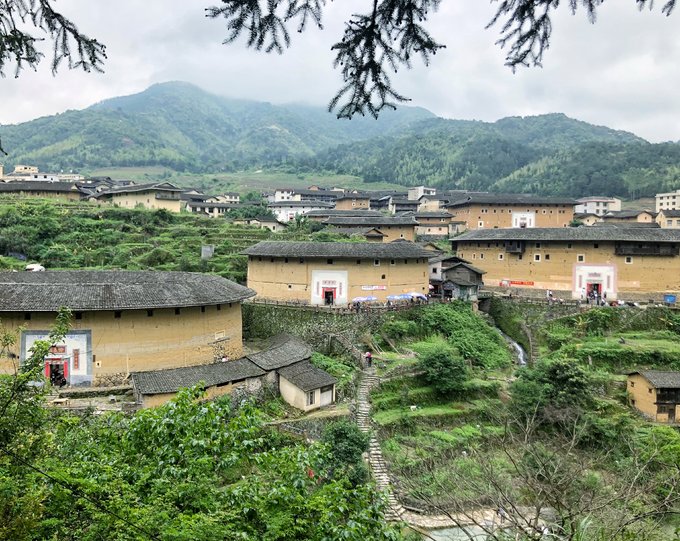
The three circular earth buildings lined up in this line, each with a square earth building on each wing, look down from the sky, like an alien symbol。
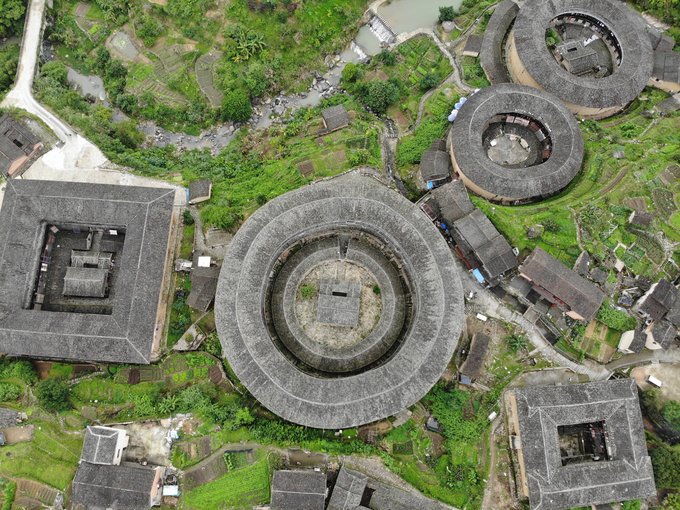
The first earth building built by the Xu clan was called Heqing Building, and later the earth building in the village all carried a word of Qing, symbolizing the prosperity of the people and all the best. There are about 11 earth buildings in the whole earth building group. Select a few impressive presentations.
♦♦♦ Jiqing Building
During the Yongle period of the Ming Dynasty, the third generation of the Xu family raised huge sums of money to build the Jiqing Building, which has a history of more than 500 years. It is one of my favorite earthen buildings on this trip.
Jiqing Building is a Shuanghuan Tulou building with an ancestral hall in the middle. It has been requisitioned and all the residents have moved out. So the whole earth building is quiet and clean.
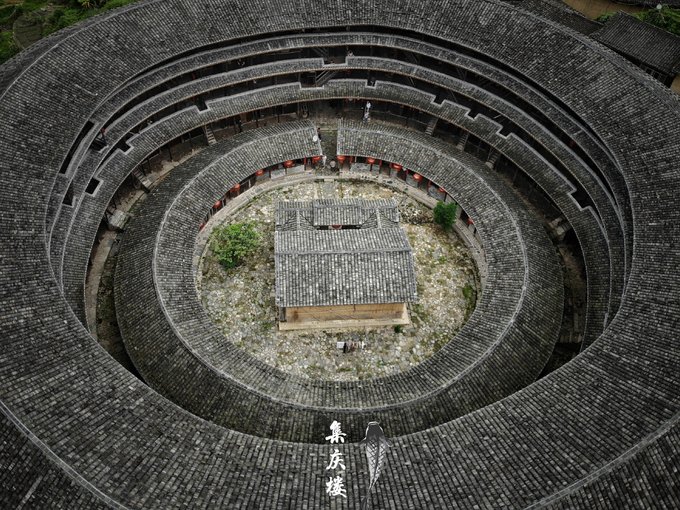
Unlike most earthen buildings, there are four ladders on the first floor, two ladders on the first floor, and there are ladders in the Jiqing building. The reason is that there is a ladder and a household.
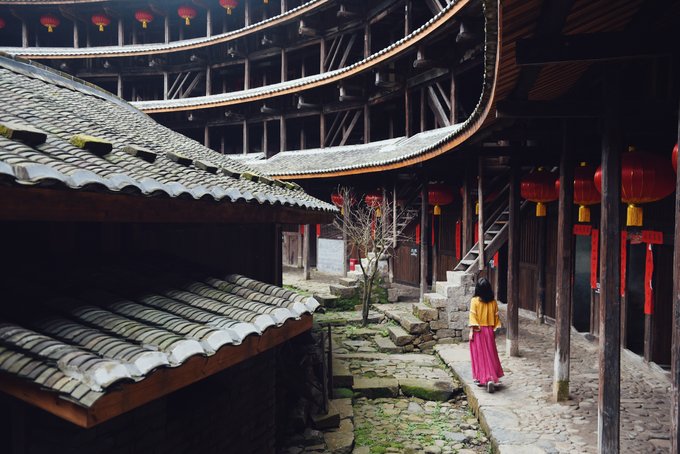
Because there are not many tourists in the entire Tulou group, there is no trace of commercialization at all, so you can go upstairs at will.
The room on the first floor has been made into an exhibition hall, displaying some introductions of Tulou and Hakka customs and customs.
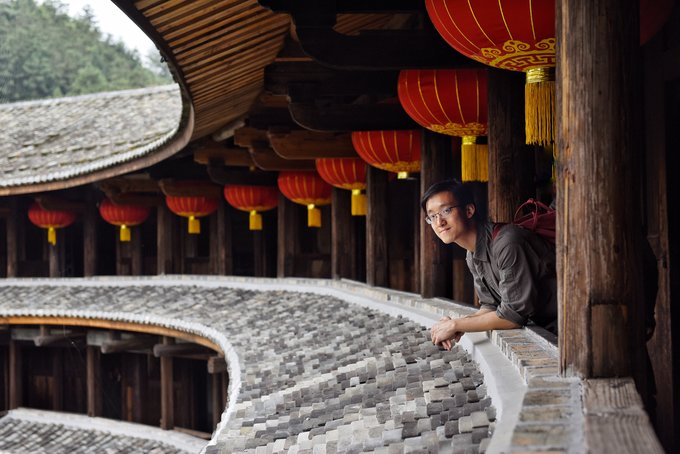
Come back and look at this scene, which is exactly the same as in the movie Big Fish Begonia (although not the same earth building)
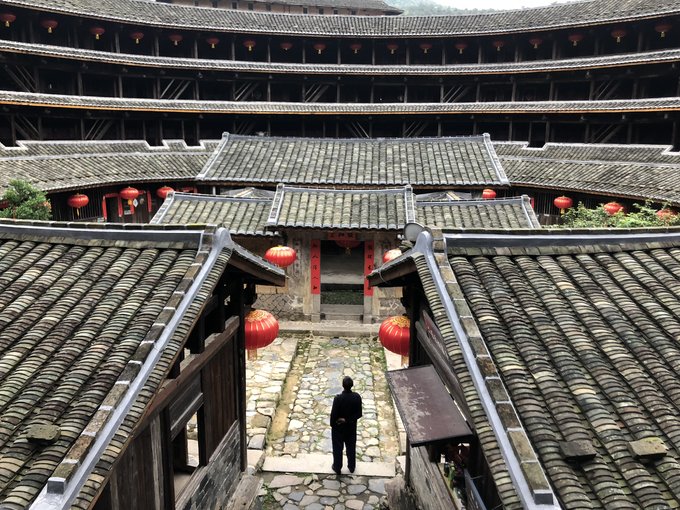

♦♦♦ Fanqing Building
Randomly choose a square earth building to visit, Fanqing Building is 4 floors high, and there are still many residents living in it
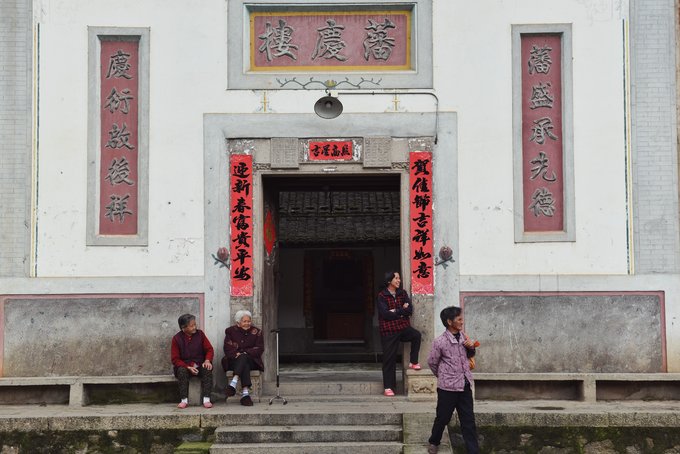
Very life-like and not too cluttered
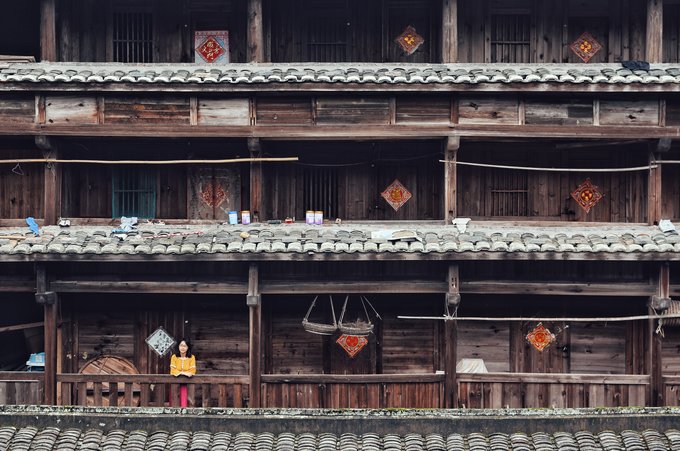
There is also an ancestral hall in the middle, which is the structure of Wufeng Building。
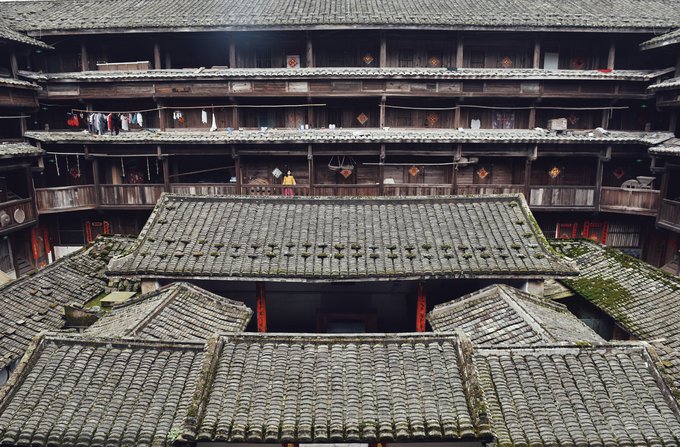
♦♦♦ Shanqing Building
Built in 1978, it is probably the youngest earthen building. The circular single ring structure can be recognized at a glance in many earth buildings, because its outer wall is painted white, which is very eye-catching.
Unlike most earth buildings that use cobblestone flooring, the patio floor in the earth buildings is paved with square slabs of uniform specifications, which has a strong visual impact.
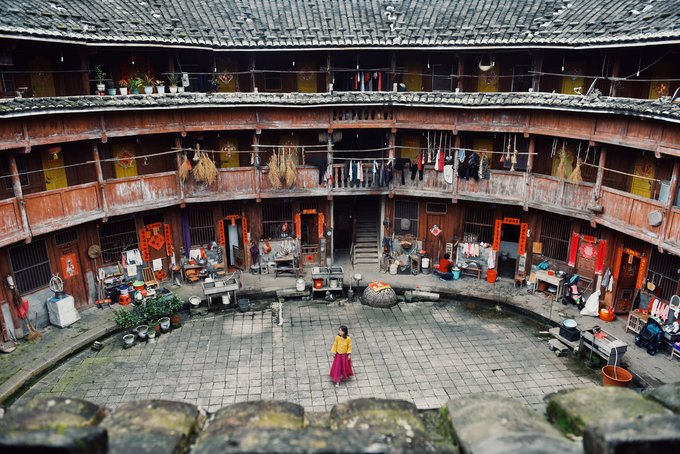
♦♦♦ Village
Chuxi Village itself is also very beautiful. There are three main roads made of bluestone and paved in a ladder shape, which extend along the mountainous terrain.
Like many villages in the country, only old people and children can be seen here. Young and middle-aged people are mostly working outside.
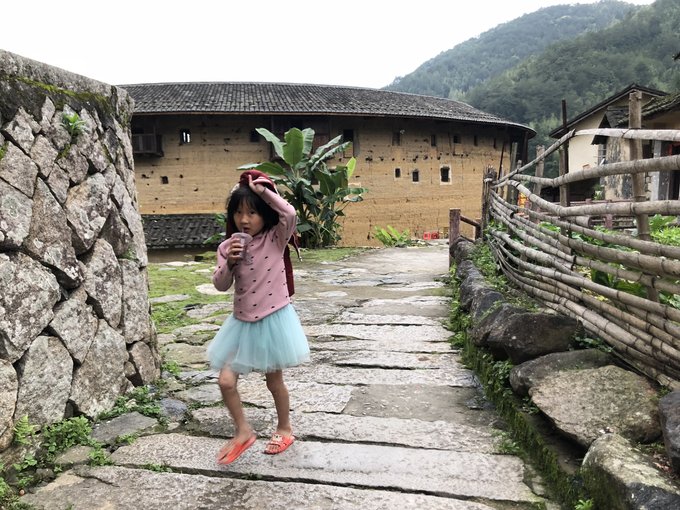
Quiet and simple, away from the hustle and bustle.
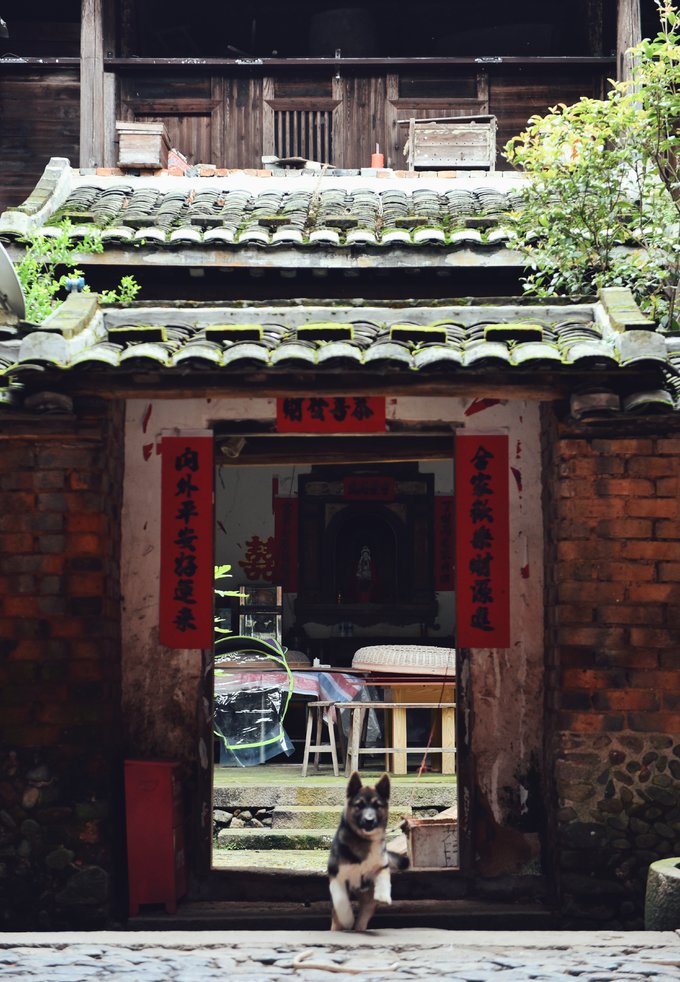
♦ Hongkeng Tulou Group
This year, everyone is advocating niche secrets, and I still want to encourage you to squeeze crowded hot spots.
After all, there are things that are really not "niche" or "secret realms", nor are they replaceable by "less people are suitable for taking pictures".
Hongkeng Village is located in the west of the Bopingling Mountains, and belongs to the low mountain and hilly terrain. In the late Song and early Yuan dynasties, the Lin family started to build earthen buildings here, and the earthen buildings originally built had collapsed. The whole village continued for more than 2,000 meters along Hongchuan Stream. 35 large and small earthen buildings are scattered on both sides of the stream. In addition to the common round and square earthen buildings, there are also Wufeng earthen buildings and palace earthen buildings. It takes two or three hours to visit several major large earthen buildings.

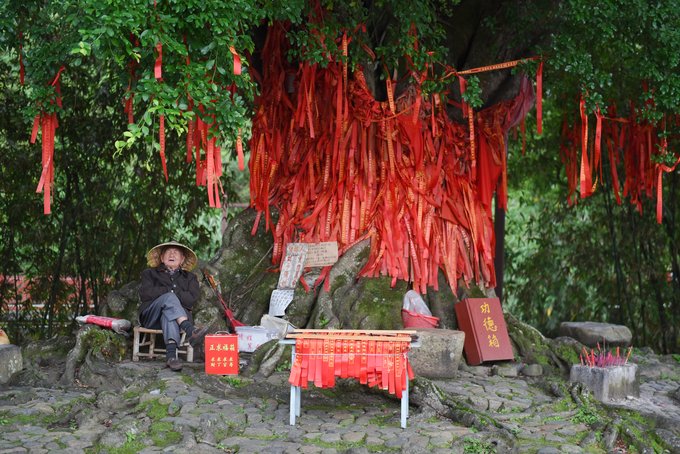
♦♦♦ Zhencheng Building
The Zhencheng Building was built by the Lin brothers after raising money with experience in tobacco. Because of its abundant financial resources, the entire earth building is striving for excellence from the inside out. The stone carvings are exquisite and elegant, and the cast iron fencing rails are unique in the earthen building. The decoration is a fusion of Chinese and Western styles and has a very high aesthetic attainment.
This time it was very wise to carry the aerial camera, and appreciate the perfect architectural knot of Tulou from another angle. Looking down from a height, the circular building of the Zhencheng Building has a half-moon-shaped house symmetrical to the left and right, shaped like a black gauze hat.
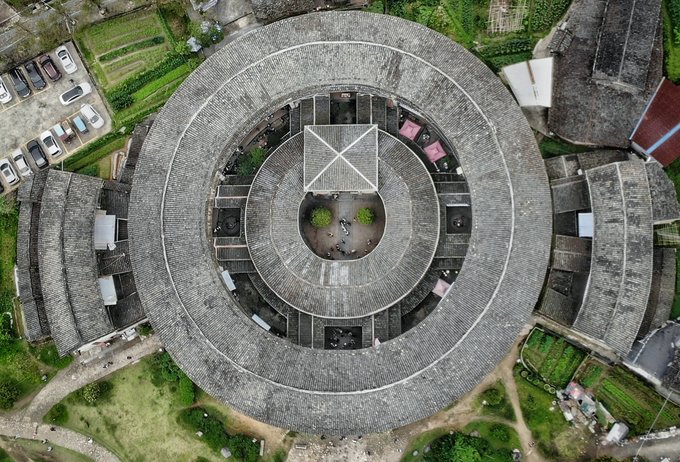
Tulou is composed of two rings inside and outside. The outer ring building is laid out according to the diagram of the Eight Diagrams of the Book of Changes. The whole ring is divided into eight sections according to the phase of the gossip. The six rooms are divided into a single unit and a group of buildings. The hexagrams are separated by blue bricks. This design not only effectively forms an independent private space, but also helps to prevent fires and prevent disasters. If a hexagram is on fire, the fire will not spread.
The inner ring is enclosed by a two-story ring building and a tall ancestral hall on the central axis. There is a hall in the building, two wells (the two levels of Yin and Yang that conceal the gossip), and three gates (the sky, the earth, and the three talents in the meaning of the gossip).
The inner and outer rings are connected by four groups of corridors, dividing the courtyard into eight patios.
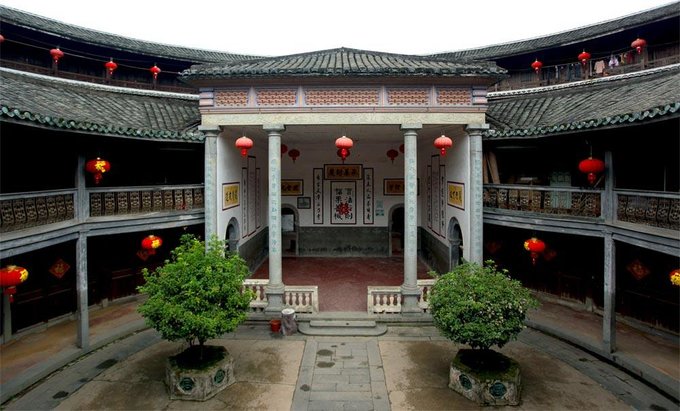
Tulou is composed of two rings inside and outside. The outer ring building is laid out according to the diagram of the Eight Diagrams of the Book of Changes. The whole ring is divided into eight sections according to the phase of the gossip. The six rooms are divided into a single unit and a group of buildings. The hexagrams are separated by blue bricks. This design not only effectively forms an independent private space, but also helps to prevent fires and prevent disasters. If a hexagram is on fire, the fire will not spread.
The inner ring is enclosed by a two-story ring building and a tall ancestral hall on the central axis. There is a hall in the building, two wells (the two levels of Yin and Yang that conceal the gossip), and three gates (the sky, the earth, and the three talents in the meaning of the gossip).
The inner and outer rings are connected by four groups of corridors, dividing the courtyard into eight patios.
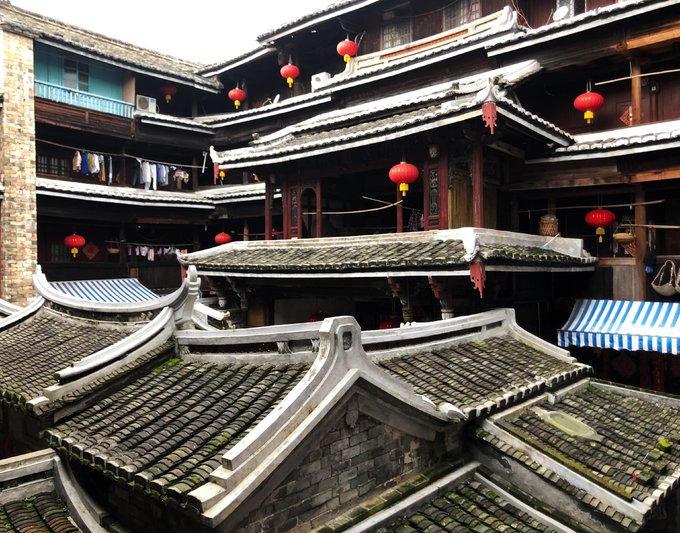
♦♦♦ Fuyu Building
Fuyu Building is a classic three-story two-horizontal five-phoenix building.
Three halls and two horizontals refer to the three halls of the front hall, hall and middle hall, and the two horizontals are the horizontal house and the horizontal building.
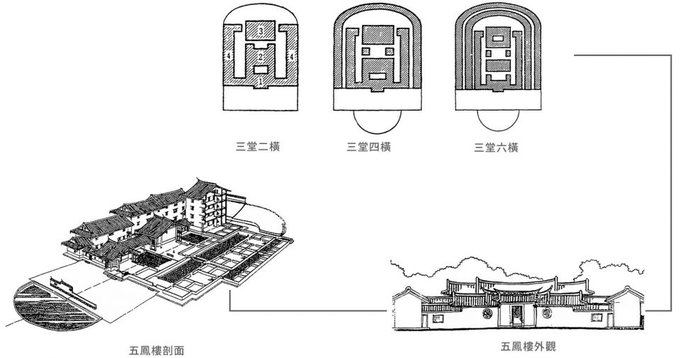
The more obvious sign of the Wufeng Building is that the entire roof is 5 floors, and the central axis of the main building is low in the front and high in the back. The eaves are slightly warped at both ends, like a phoenix taking off. If the foundation is a mountain slope, the hall in the building and the lateral buildings on both sides rise stepwise with the terrain, and the ground in the building also shows a multi-step ladder.
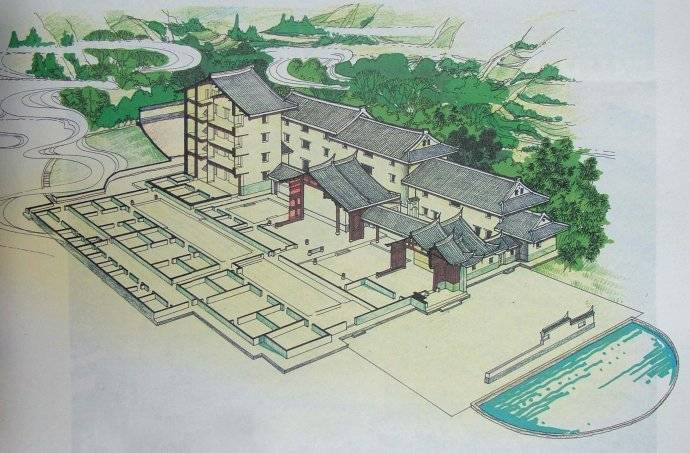
Because we did not go to the other side of the river, we did not take a panoramic view of Wufeng Tower.
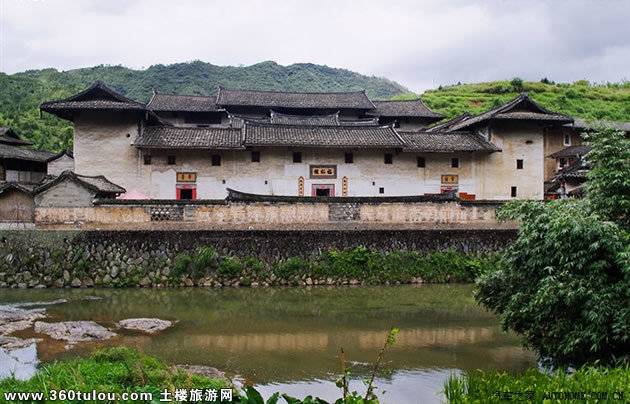
The Wufenglou structure of the earth building completely retains the construction style of the Central Plains, and the number is very small. It is common in the early earth building. Later, in order to improve defensiveness, it gradually evolved into a circle and a square.
The rooms of the circular and square earth buildings are the same size and the pattern is similar, representing a spirit of equality. The Wufeng Tower, centered on the Santangwu, contains a clear sense of primary and secondary respect, which is more in line with the Han cultural tradition.
♦♦♦ Rusheng Building
The smallest miniature Tulou, across the river from Fuyu Lou. It is also the prototype of the Lingfu residence in the big fish Begonia
♦ Gaobei Tulou Group
♦♦♦ Chengqi Building
I didn't plan to come to the Tubei Group in Gaobei, but the classmates of scientists said they wanted to see the King of Tulou. Facts have proved that Chengqi Building is still worth a visit.
When you came to the Gaobei Tulou complex, there were big fish begonia propaganda headlines. Because Chengqilou is the home of Chun in the big fish begonia.
The narrow aisle between Chengqi Building and Shize Building has become a checkpoint for tourists. Wave guides take tourists here with pride and instruct them how to take pictures. "Two-thirds of the dome and one-third of the square roof ..."
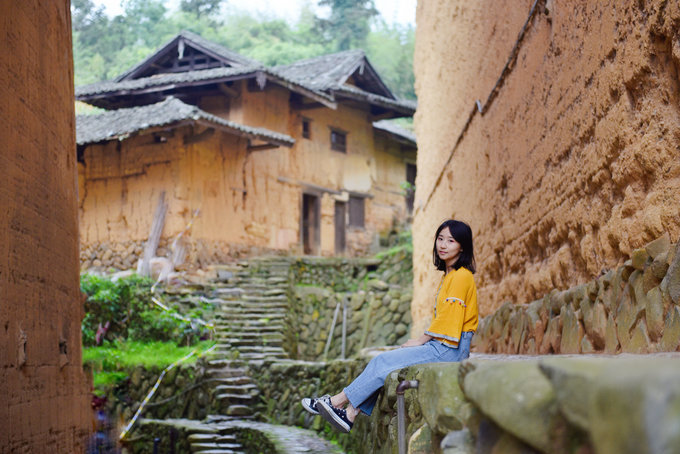
However, the meaning of the Tulou itself is more attractive to me than the meaning given to it by the movie.
The Chengqi Tower is known as the "Tulou King" and was built during the Kangxi period of the Qing Dynasty. There are more than 370 rooms in the whole building, which are surrounded by layers and intricate. It is said that the thief could not escape from this building for a month.
The entire earthen building is like a folded old town, and another pair of Taiji gossip. Two rooms on both sides mean Taijisheng and two ceremonies. The rooms in the inner circle are two geniuses and four elephants. The family's gossip. The ground floor is mainly the kitchen and living room, the second floor is the barn, and the third and fourth floors are the bedrooms.

From a height, Chengqi Building is an irregular circle
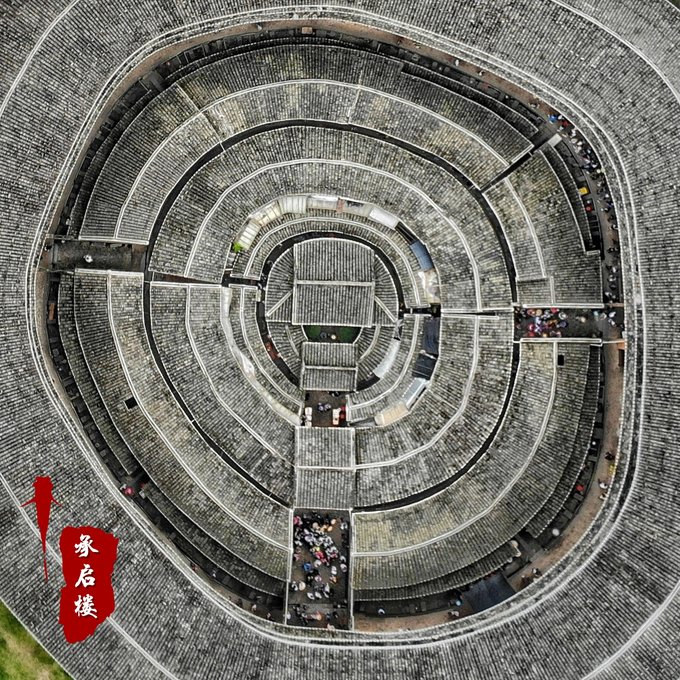
The interior of the Tulou is very commercialized. The outer ring sells tobacco tea, and the inner ring is made into a tea shop, drinking tea to sell tea.
Tobacco in Yongding is very beautiful. In the early years, the Lin clan made a fortune by selling tobacco. It's hard to tell whether tobacco is good or bad, but it's still interesting to see how local people make cigarettes.
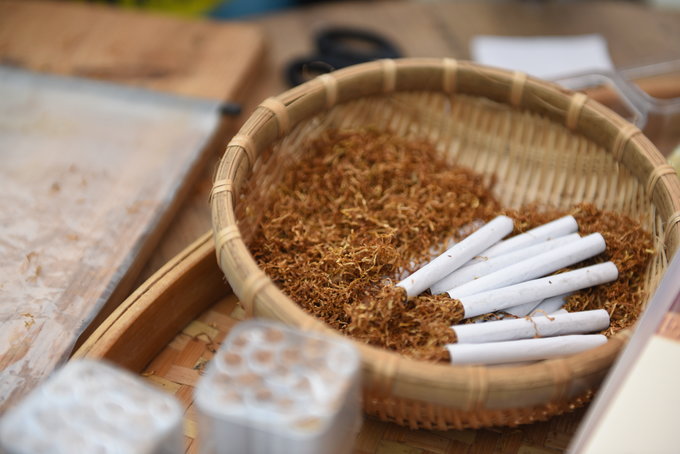
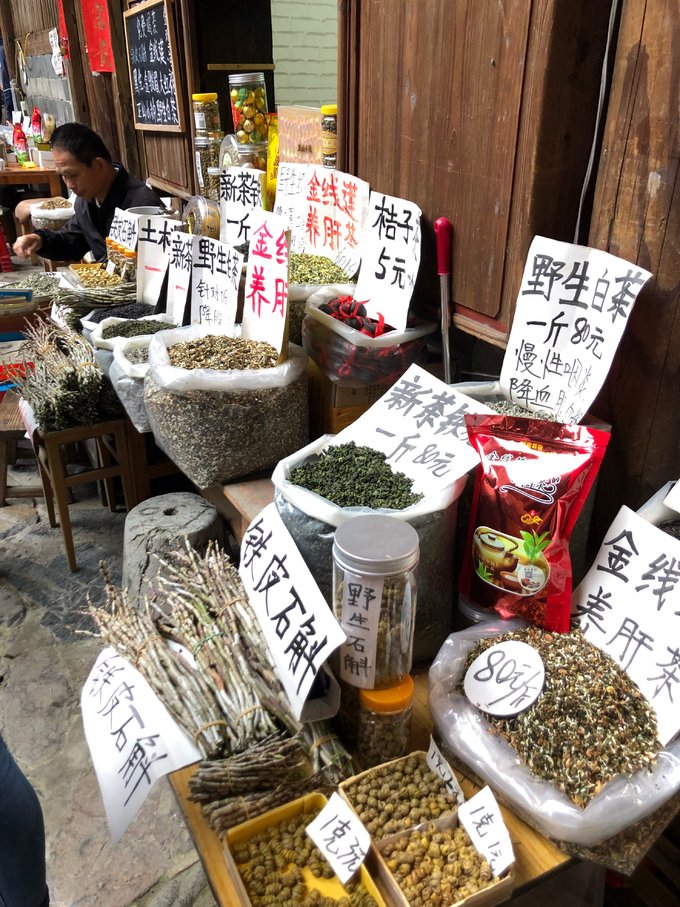
Although each tour guide will eventually take you to her house for tea, it is still worth finding a tour guide to tell you the story of the earth building, from the foundation, the pebbles on the outer wall, to the design of the earth building, especially the magical water conservancy system, fire prevention measures , And how the Hakkas used the design features of the Tulou to defend and resist when the enemy attacked.
♦♦♦ Shize Building
Next to the Chengqi Building, the square earth building separated by a crack is the Shize Building. It was once destroyed by war and restored after reconstruction.
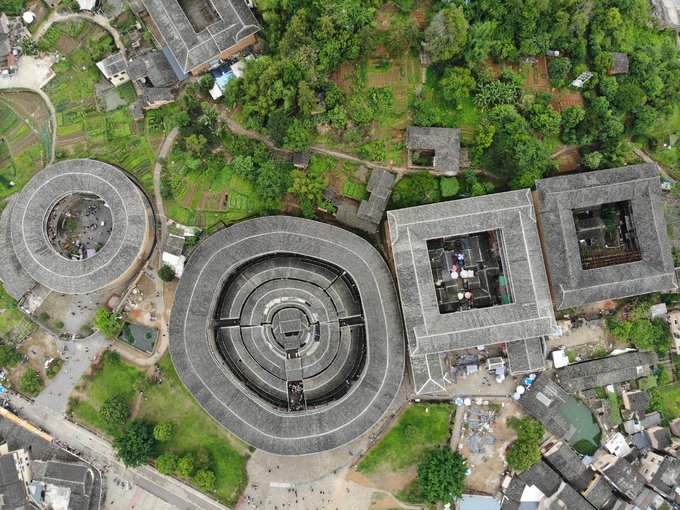
Faded wooden gates are paired with bright red couplets. It is said that water outlets are reserved above this wooden gate. If someone sets the door on fire, the reserve water source in the granary on the second floor can be discharged through the water outlet to extinguish the fire.
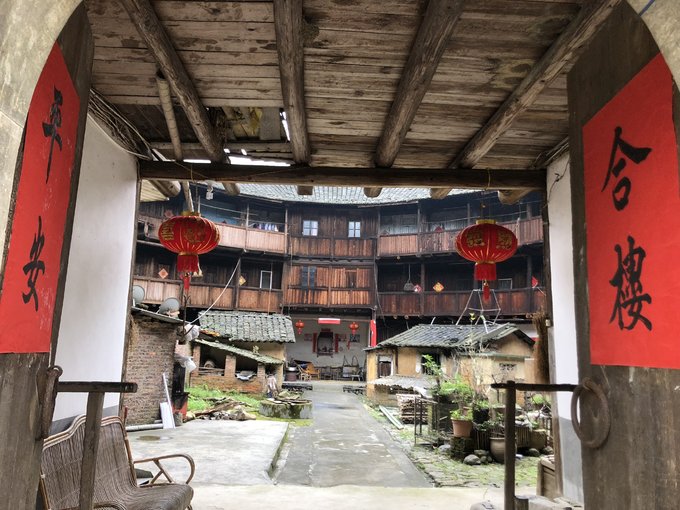
♦ Yunshuiyao
From Hongkeng to Yunshuiyao, he will pass through Hekeng Tulou Group. So we went to Hekeng first, and as a result, the ticket office at the door told us that we can visit Hekeng for free with Yunshuiyao tickets.
So we changed the itinerary and went to Yunshuiyao first, then to Hekeng the next day.
After reading a comment, all the scenic spots called pits here are not pits, but the poetic name Yunshuiyao is a big pit. Fortunately, my accommodation is set in the scenic spot. . . They come, the security
♦♦♦ Unknown Tulou
The only famous earthen buildings in Yunshuiyao are Huaiyuan Building and Hegui Building. But we found an unknown earth building opposite Hegui Building, which has been burned in half, and the remaining half actually lives.
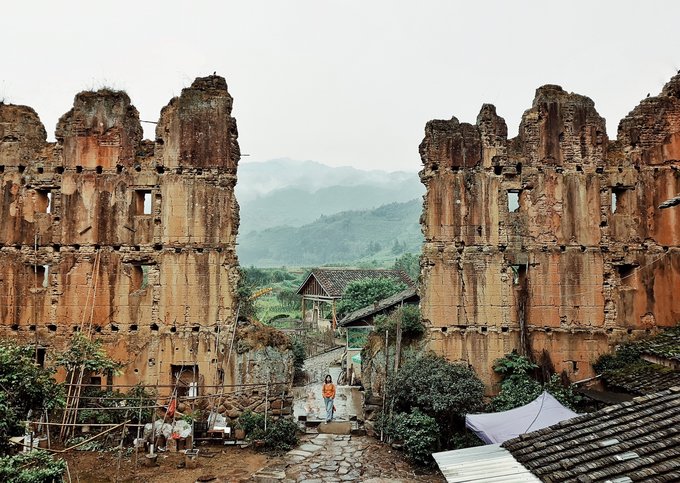
The cross-section of the Tulou can be clearly seen, which is very suitable for the Tulou Craft Museum. It also verifies the function of the fire wall between the Gua and the Gua in the Tulou.
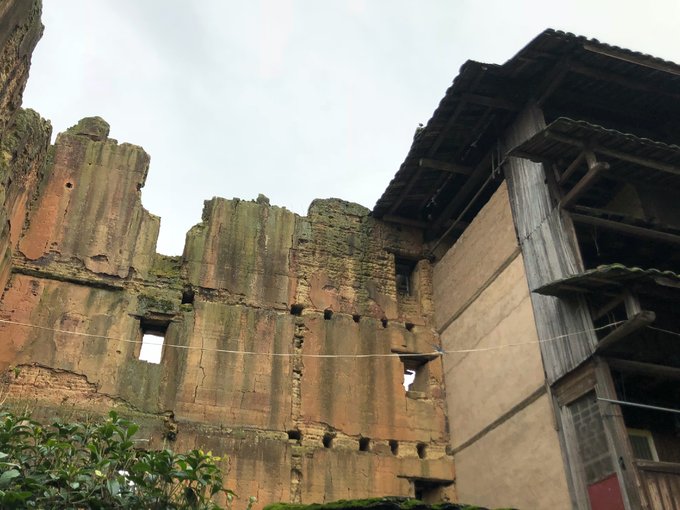
♦♦♦ Village
Yunshuiyao is located in Nanjing County, Zhangzhou City, and was originally famous for several scenes in the movie Yunshuiyao.
If you are not overwhelming tourists, the long ancient roads here, centuries-old trees, green mountains and green waters, tranquil and far away

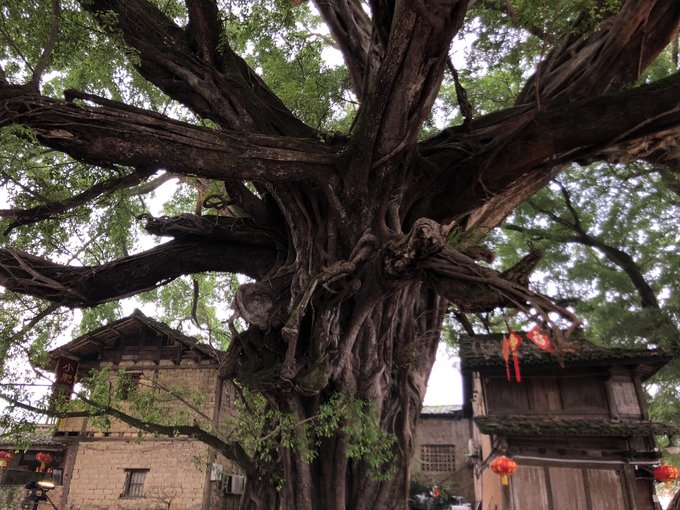
So if you want to come to Yunshuiyao for sightseeing, it is still recommended to stay in the scenic spot this evening, you can enjoy the good morning of the ancient town
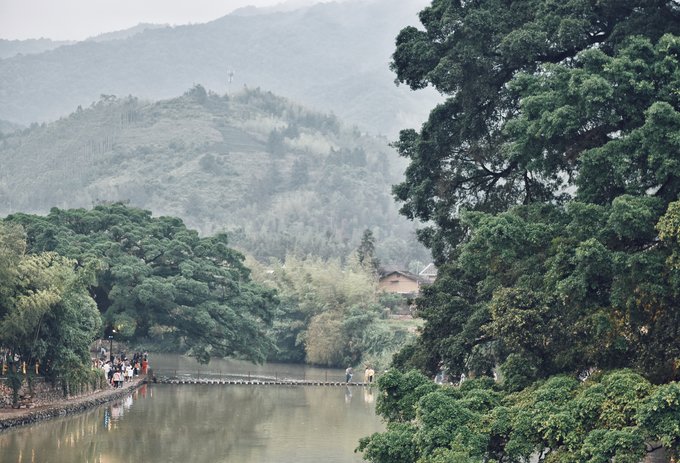

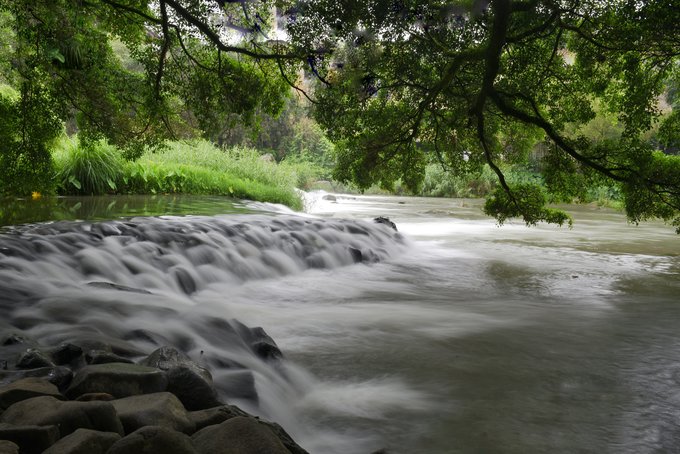
♦♦♦ Hegui Building
Located in the Yunshuiyao Scenic Area, Heguilou is an earthen building built on a swamp. It is said that because the Feng Shui is too good, the owner insists on building a building here.
More than 200 pine woods were used for the foundation alone. When the third floor was built, the covered third floor was demolished due to sinking and the foundation was relaid. Later, in order to ensure the construction quality, only one floor was built a year. After the construction, one year of observation should be observed. If there is no sinking, the upper floor should be built.
It is said that the open space in the middle of the patio is stepped on softly, like stepping on a swamp. Of course I tried it and found that the ground is still very hard
Another highlight of Hegui Building is the Yin-Yang well in the patio. Although the two wells are only tens of meters apart, one can drink clean water and the other can be turbid. It's amazing.
Because we arrived in the afternoon in Yunshuiyao, it was the peak time for tourists, and there was heavy rain, even a photo of your building was not taken.
In the evening, stay in Yunshuiyao ’s inn. The ancient town after the dispersal of people is still very comfortable. Watch a Yunshuiyao movie in the beautiful patio of the inn.
Hekeng Tulou
Hekeng Tulou is another five-star praised Tulou after Chuxi Tulou.
The disadvantages are also the same, or the transportation is not convenient.
The main building of Hekeng Tulou is "Big Dipper Seven Stars". It pays attention to the "Fa Tianxiang Earth" in the planning and layout. It is surrounded by mountains on three sides. 27 earth buildings along the stream spread out one after another. Among them, Dongsheng Building, Xiaochun Building, Yongqing Building, Chungui Building, Shengqing Building, Nandong Building and Yongrong Building are arranged in the shape of Big Dipper, and the panoramic view can be seen from the observation deck opposite the village.
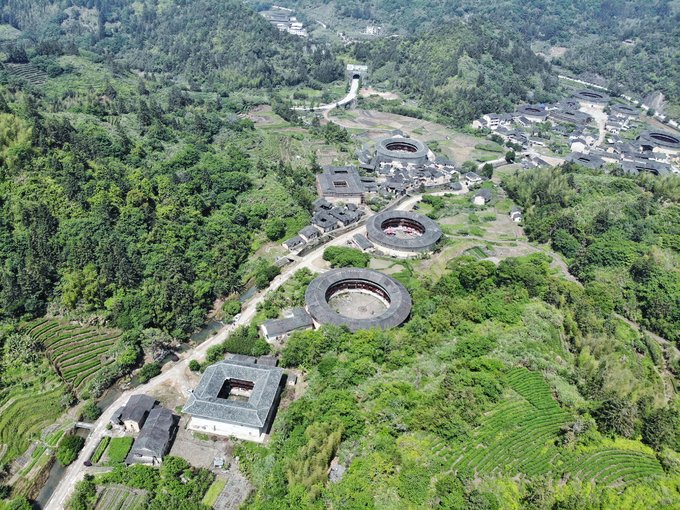
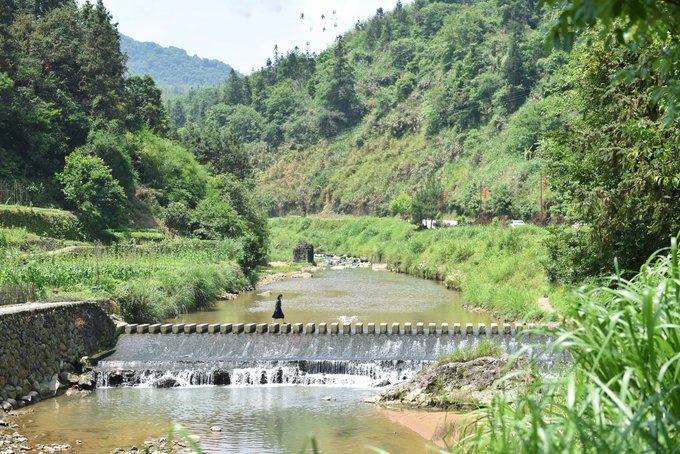
However, compared to the Big Dipper, what really attracted me here was the entire village itself. Approaching the village, the rural scenery full of "Qianmo traffic, and chickens and dogs smelling each other." In the morning, almost no tourists even seemed to be in a paradise.
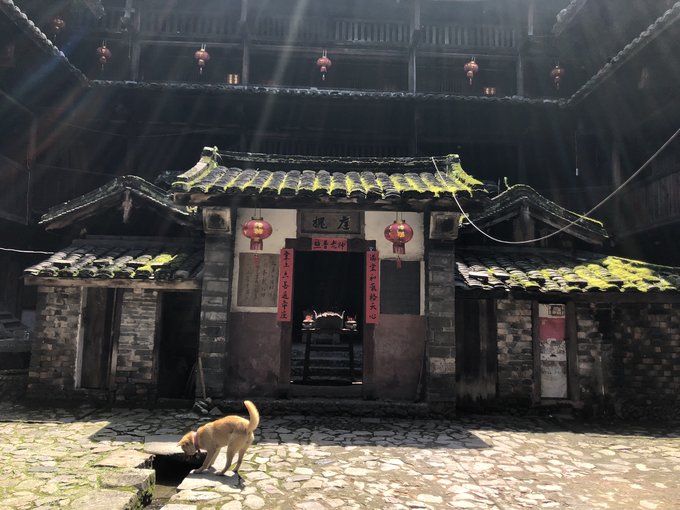
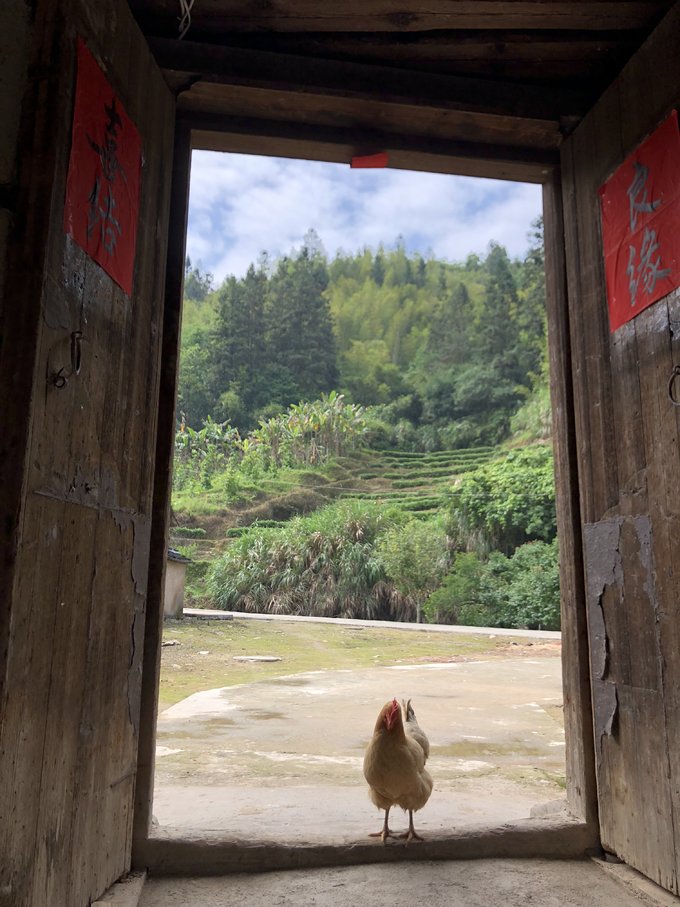
Although the density of the earth buildings in the Hekeng earth building group is very high, they are heartily sighed when they step into any other earth building. The ancestral hall was built, so the whole space is very spacious and bright.
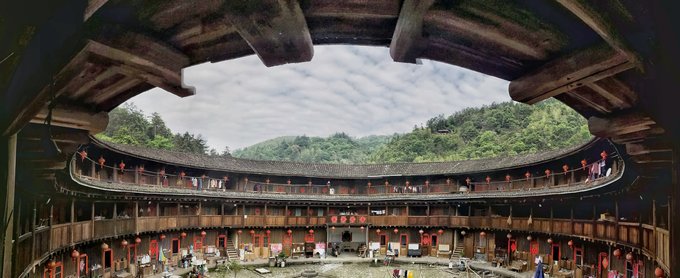
♦♦♦ Shengqing Building
There are also some tourists visiting the several earthen buildings at the entrance of the village, walking along the village path to the end, there are few people in Shengqing building
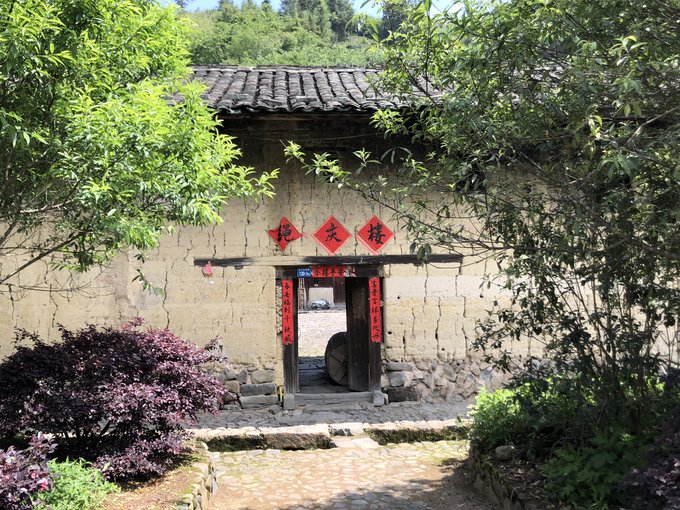
The Shengqing Building is similar to the Hegui Building. It is a combined group of earth buildings. The main body of the earth building is a square. There is a family of rammed earth houses at the gate, which surrounds the entrance into a front yard. Cuo means “house” in the local dialect). In Hakka culture, there is a saying “Cuo Baolou, children and grandchildren, Lou Baocuo and rich children and grandchildren”. It can be seen that Shengqinglou also places great expectations on future generations.

The front yard is very quiet and tidy, take a group photo
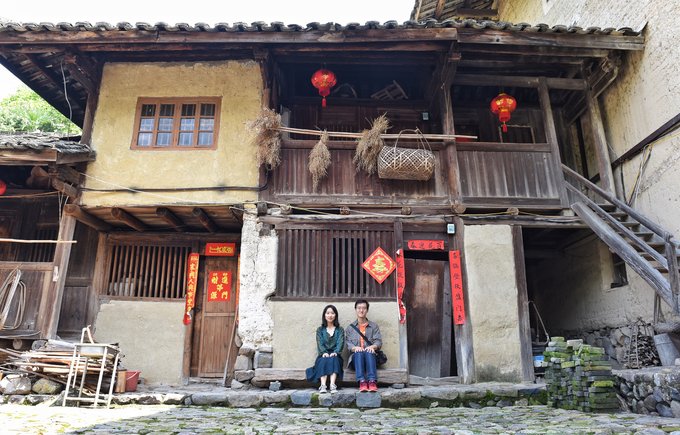
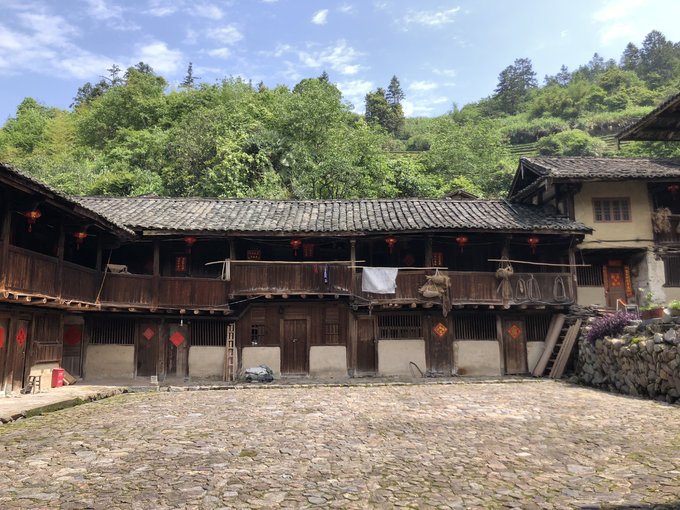
Walking from the gate into the earth building, the ancestral hall "Tinghuai" is chic and elegant.
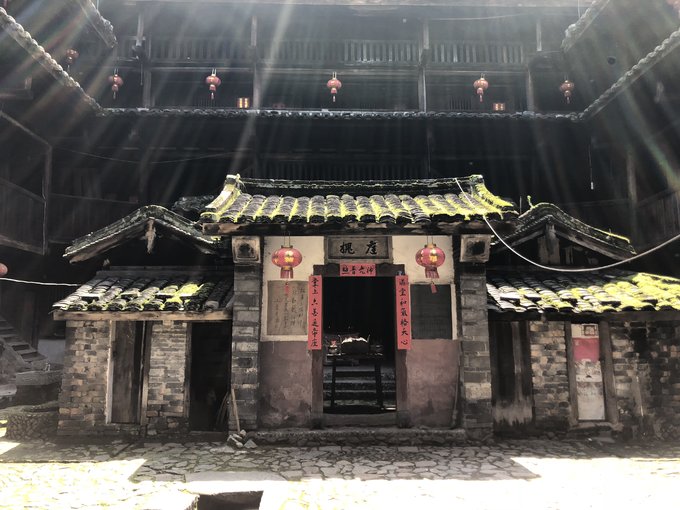
♦♦♦ Nanxun Building
South is the orientation, smoked as vanilla. "Xun Ran Ci Ren is a gentleman." Nan Xun Lou is a gentleman from the south.
The name of Nanxunlou is so beautiful that I was a bit disappointed when I saw the main building of Tulou.
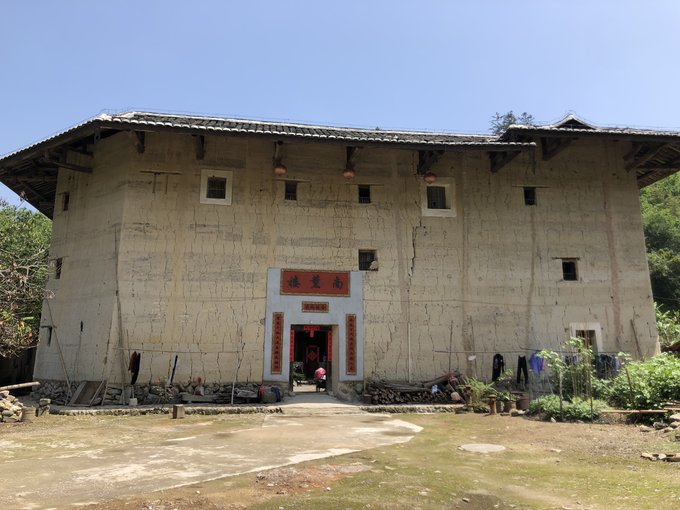
Nanxunlou is the only pentagonal earthen building. The reason is that the land expropriation was not acquired at the time, and finally only a corner was cut on the left side of the earthen building. Approaching Nanxunlou, you will find that the hall is not in the middle, but on the right side of the building. It is said that because the earthen building was originally built to sit east to west, and because the gate was too bad for the mountain, future generations changed the gate to sit north to south, so the hall position was "skewed".
Hengjiatulou
I saw photos of Hengjiatulou on the Internet before. But after searching the map, there was no landmark called Hengjiatulou. This time the trip was relatively loose, so we decided to try our luck near Hengjia Village.
I thought I was looking for a good meal, but I didn't expect to see this earthen building on the road to Hengjia Village
The car stopped at the entrance of the local people at the intersection, and you can see the Tulou about 300 meters on foot
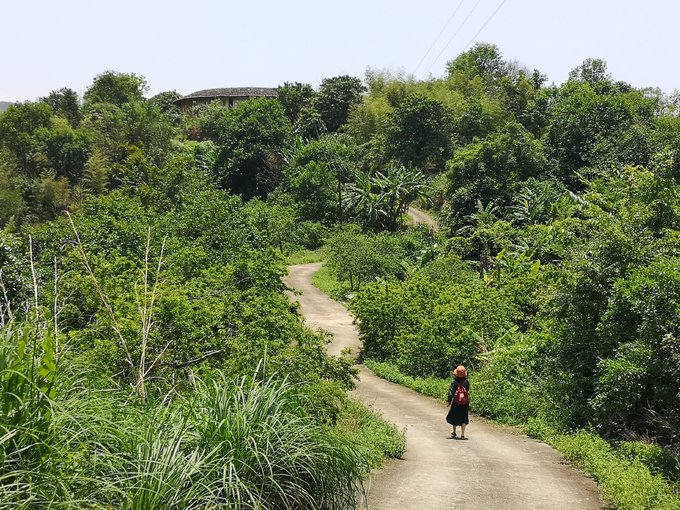
The earth building is completely deserted, the grass is tall with me alone, the stairs are already incomplete, and the roof is covered with bats.
But when the aerial camera recorded the earth building from a high altitude, a winding path in the green jungle, at the end of the path was a lonely earth building, it was really exciting
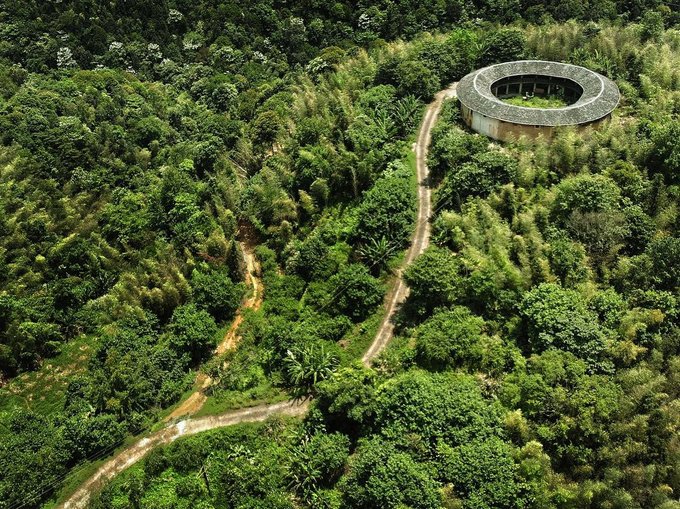
The residents at the entrance of the road told us that this earth building was gradually abandoned by the residents because it was far from other earth buildings. Someone once contracted to carry out transformation, but then it was abandoned for various reasons. Scientists say that it can be made into a high-big Tulou homestay, but I think let it continue to retain a little desolate beauty.

end:
In the mountainous area of southwestern Fujian, these large and small tens of thousands of earthen buildings can not be read in full, but it is also exciting to be able to choose one or two of them. These earth buildings are not only magical buildings, but also the inheritance and carrier of Hakka culture. May wish to arrange a small holiday to find out。